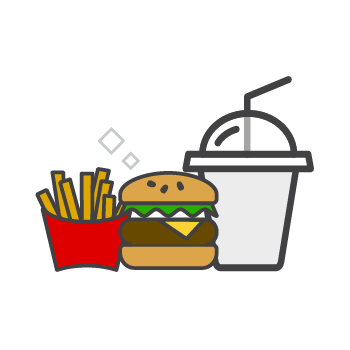Caribbean Aesthetics: Kennard Browne Sets the Trend for Guyanese Leathercraft
by Lou-Ann Jordan Nov 7, 2022

Leather art is a recognisable aesthetic in our region, with many countries featuring some form of leathercraft. Leather sandals are incredibly popular in Guyana and on several Caribbean islands. Deeply entrenched in the region’s fashion, many are the feet they adorn. Moreover, they cross the boundaries of gender and age as they are worn by the young and old, male and female.
As for the artists dispersed throughout, they create signature styles that display the intricate workings of leather and colour. Guyana is known for producing remarkably crafted leather sandals that stand out for their leather, design and play with colour and the talented artists that create them.
Among our notable leathercraft artists is Kennard Browne. Born and raised in West Ruimveldt, Georgetown, he is a man of many talents. In addition to producing outstanding leather products, the now Craig, East Bank Demerara resident, is a full-time art teacher and landscaper.
Browne took time out of his busy schedule to discuss his work as a leather artist. Read on as he shares how his fine art training informs his leather creations allowing him to create trendsetting designs.
When did you first become interested in art?
I think art is in my DNA. I grew up seeing my father, a spray painter and auto body mechanic, mixing colours. Similarly, my mum offered early lessons as she constantly mixed paint to create unique shades of colour as he matched that of the job at hand.
However, like every other child, my first foray into art was in the form of scribbles. As I grew older, I would draw car logos on visits to my dad’s workshop; for the very fancy ones, I would sketch the entire car. In primary school, I recall being one of the best artists in the class among my friends as we would challenge each other to draw.
When I entered secondary school at St Joseph High, I met the late Sandra King. An exceptional art teacher, she saw my talent and encouraged me to study art for CXC, now CSEC.

You’re also an art teacher. How did that come about?
Upon completing high school, I did various jobs, including working at KFC and Precision Woodworking, where I also started landscaping as a side job. During a landscaping job for one of my clients and a former form teacher at St. Joseph High, Ms Karen Roethof, I was encouraged to join the profession as there was a need for a woodwork teacher at the Sophia Special School where she was employed. I swiftly exploited the opportunity and applied to the Teaching Service Commission.
In 2006, I began teaching woodworking, but art would quickly follow. Whilst teaching woodworking, I realised that most students couldn’t draw the templates used to transfer patterns to wood for cutting and making objects. It was evident that lessons in art were important. So, I persuaded the head teacher to have visual art added to the curriculum, which she did, and I became the primary art teacher until my transfer in 2015.
Later, I moved to the Diamond Secondary on the East Bank of Demerara, where I am presently the Head of the Allied Art Department, teaching Physical Education and Visual Arts.
What aspects of visual art do you teach?
To say I teach a specific aspect of art would be incorrect since I find myself teaching principles of art, theories of art, and even history as I gear my learners toward the world of art and the CSEC art examination. That said, drawing, painting, ceramics sculpture, textile design and manipulation and, of course, leathercraft are the preferred expressive forms of my delivery.
With your art background leading you to leathercraft, would you say leather is now your preferred media?
Yes! Although I enjoy working with clay and textiles, leathercraft is my passion. What I like most is the dynamism of the material. Any animal skin that can go through the tanning process is considered leather giving way to various textures and consistency. Different types of leather offer distinct effects. There is no limit to what can be created with it; as far as my creations go, I love stretching the boundaries of design and style. I see my work as fine craft and with God’s guidance, it will take me to altitudes that one can’t imagine.
What type of leather products do you create?
I craft leather slippers, bags, wallets, purses, knife cases, phone cases, wall hangings and customised pieces as leather lovers always challenge my versatility.

Who taught you the skill of leather art?
One day, while browsing the daily news, I saw an ad in the newspaper about modular art courses at the ER Burrowes School of Art. Without hesitation, I enrolled to do graphic design, but I had a change of heart and decided to switch to leathercraft instead. To this day, I have no regrets about doing that programme, Mr Synval Storm, the lead tutor. Later, it provided a way for me to attend the University of Guyana, where I learned to manipulate different media, techniques, and theories.
Is leather art considered a traditional form in Guyana?
Yes, leather is a traditional artistic medium in Guyana. It’s part of our rich heritage as it connects us to our African and Amerindian ancestry.
Do you work with any specific type of leather?
Generally, I use regular conventional leather tanned locally, some of which is tanned with the mangrove bark. These I source from one of our three major tanneries along the coastline. I like the mangrove-tanned leather because it offers a rich, organic finish. Its natural colour becomes a part of the aesthetics of the finished product. I also use leather tanned with a vegetable extract that is sourced locally or from Brazil and chrome-tanned leather all the way from Pakistan and Europe. I’ve found working with softer leather gives customers the comfort I wish to provide. However, the issue with imported leather is that it can appear once on the market and never again.
How do you decide on the designs for your slippers and bags?
First, customers usually ask for a pattern they’ve seen before, but with some modifications for the slippers. The bags are also customised to customers’ specifications. However, for exhibitions, I follow my vision when designing, but I try to keep them close to the styles, sizes, and designs that are trending while still adding a little flair. Sometimes a new product can take months to be completed. In times like those, I rely on inspiration and problem-solving to determine the best expression.
Which is your favourite product to craft?
I don’t have a favourite; once I’m creating or manipulating the leather, it makes me feel good. But I have been producing more belts and slippers than any other product.
How does your art training impact your leathercraft?
I merge my artistic knowledge with leathercraft to produce unique designs. So, I incorporate basic artistic principles to give my work a unique and creative finish. For example, I use colour theory when deciding which colours blend well as I market my products to my customers.

What contributes to your satisfaction with your work?
I feel immense pleasure when I look at the magnitude of my production. I want to keep all my pieces and admire them in those moments. But not only is it impractical, but only I would know my skill in that way. When customers react to my work, when a head or body turns in my direction as I display my slippers, belts, or bags, I feel great satisfaction. The comments are breathtaking and motivation for greater steps.
Who or what keeps you inspired?
My customers keep me inspired by their reactions and compliments. Also, my dreams are incredibly self-motivating.
What recent project(s) have you found most fulfilling, and why?
I recently exhibited my work at the International Building Expo 2022 and the ACDA Emancipation Exhibition and Celebration. Both events were very fulfilling, mainly because of the overwhelming response I received.
How can your products be accessed?
I maintain a Facebook page on which customers can view my products. They can DM me there or on WhatsApp at +59-683-0160. Also, it’s my goal to host a solo exhibition soon; those interested can be on the look out for updates on my Facebook page.
****
We hope you enjoyed this instalment of Caribbean Aesthetics. Be sure to check out some of our past editions, which featured artists from Aruba, Grenada, and St. Lucia, to name a few.








